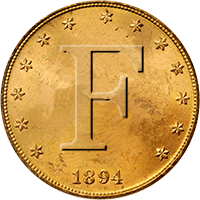DirtFlipper
New member
Howdy,
Here's one way to make lemonade from lemons. Or not!
Sometimes I pick up a few crown caps that sneak through the discrimination (my ears!). But, I also keep an eye out for old ones that used cork backs, and that show the possibility of getting cleaned up. How to tell? See if any of the gold metal still shows on the back, or any sign of color still on the top. Coming out of the ground, they might look like this:
[attachment 169424 2010July31001.jpg]
[attachment 169425 2010July31002.jpg]
As you can see (and have probably already encountered), these are pretty toasty. However, all is not lost. There are ways to clean these to learn what they are, and some can still hold value (especially old beer ones). I soak them in a mixture of oxalic acid (do a search on cleaning rusty beer cans with oxalic acid). After a soak, some turn out, some don't. From this group, I was able to make out what each one was, but these two turned out best:
[attachment 169426 2010Aug05005.jpg]
(and yes, these were among the previous six pictured). They make a decent display in one of those flat, rectangular display cases. Crown caps date to 1892, and ones used for beer prior to Prohibition, or even the 1930's are very collectable, even in rusty but readable condition.
But even if you think they're still trash, they do have another value - they provide age clues to the site, including an age/depth indicator. These all happen to date to the 1950's (all cork-backed caps pre-date the mid-1960's).
Trash? Treasure? Oh well.
HH,
DirtFlipper
Here's one way to make lemonade from lemons. Or not!
Sometimes I pick up a few crown caps that sneak through the discrimination (my ears!). But, I also keep an eye out for old ones that used cork backs, and that show the possibility of getting cleaned up. How to tell? See if any of the gold metal still shows on the back, or any sign of color still on the top. Coming out of the ground, they might look like this:
[attachment 169424 2010July31001.jpg]
[attachment 169425 2010July31002.jpg]
As you can see (and have probably already encountered), these are pretty toasty. However, all is not lost. There are ways to clean these to learn what they are, and some can still hold value (especially old beer ones). I soak them in a mixture of oxalic acid (do a search on cleaning rusty beer cans with oxalic acid). After a soak, some turn out, some don't. From this group, I was able to make out what each one was, but these two turned out best:
[attachment 169426 2010Aug05005.jpg]
(and yes, these were among the previous six pictured). They make a decent display in one of those flat, rectangular display cases. Crown caps date to 1892, and ones used for beer prior to Prohibition, or even the 1930's are very collectable, even in rusty but readable condition.
But even if you think they're still trash, they do have another value - they provide age clues to the site, including an age/depth indicator. These all happen to date to the 1950's (all cork-backed caps pre-date the mid-1960's).
Trash? Treasure? Oh well.
HH,
DirtFlipper
